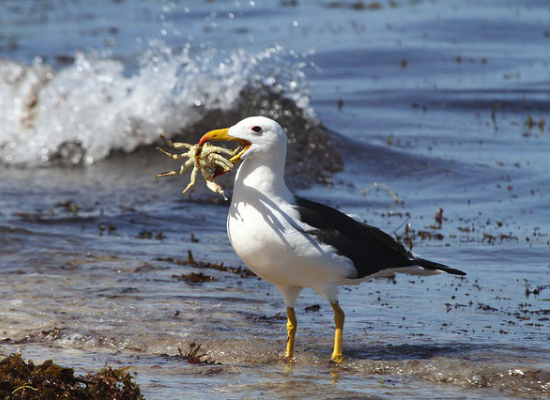Albatross
Diomedeidae

Albatrosses are large sea birds found in the Southern Oceans. One species, the Wandering Albatross, has the widest wing span of all birds – in excess of 3 metres (12 ft). They use these long, narrow wings to glide and fly efficiently during long-distance journeys over oceans. During these flights they alight on the sea to catch squid and fish. Inevitably, sea water is also ingested and the excess salt has to be secreted. Salty secretions are formed in two nasal salt glands which are found in elongate depressions in the skull bone above each eye.
Albatrosses can fly long distances, up to 16,000 km (10,000 miles) without alighting on land. They fly into the wind and angle the wings to gain height, then turn and swoop rapidly down for up to 100m.
Albatrosses come to land to breed, generally on small, remote islands. Prolonged courtship displays result in pair bonds that may last many years. Pairs nest in dense colonies and both parents incubate the single egg in turns for up to 80 days and it may take nearly a year before the single young fledges.
Virtual Albatross
What to look out for
EASY
Look the skull from the side, especially note the shape of the beak. Why do you think it is the shape it is?
MILD
Bisect the skull to see the space taken by the brain. Why do you think these birds need large brains?
TOUGH
The salt glands open onto the front of the skull. Can you identify the tubular openings.